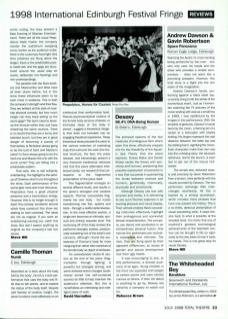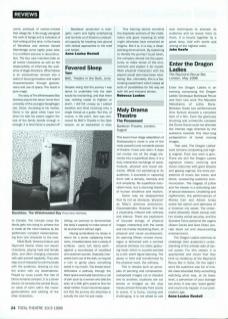The Whiteheaded Boy, written in 1916 by Lennox Robinson, is a perceptive comic portrayal of narrow-minded Irish village life. It fits snugly alongside the work of Synge and is indicative of Irish writing at this time. In the hands of Barabbas and director Gerard Stembridge some eighty years later, it is a brilliant exercise in deconstruction. The four cast members take on all twelve characters as well as the responsibility of informing the audience of stage directions. What follows is an extraordinary venture into a world of facial gymnastics and expert characterisation through gesture, voice and use of space. The result is pure magic.
The story of The Whiteheaded Boy revolves around the return home from university of the youngest Geoghegan son, Denis. According to his mother, Denis is her great white hope but when he fails his exams (again) the rest of the family decide enough is enough; it is time Denis is packed off to Canada. The intricate mess the family gets into trying to achieve this is made all the more hilarious by the performers' constant metamorphosing from one character to the next.
Mikel Murfi, Veronica Cobum and Raymond Keane share out eleven characters, playing male and female alike, and often changing character with split-second regularity. They also step out of character to communicate with the audience, drawing us into the action with wry observations. Played by Louis Lovett, the role of Denis remains constant. It is a clever device: he remains the central focus, an oasis of calm within the manic gesticulations and plotting of the other characters.
Barabbas' production is energetic, warm and highly entertaining and reminds us of theatre's undaunted capacity for breaking new ground with radical approaches to the tried and tested.


